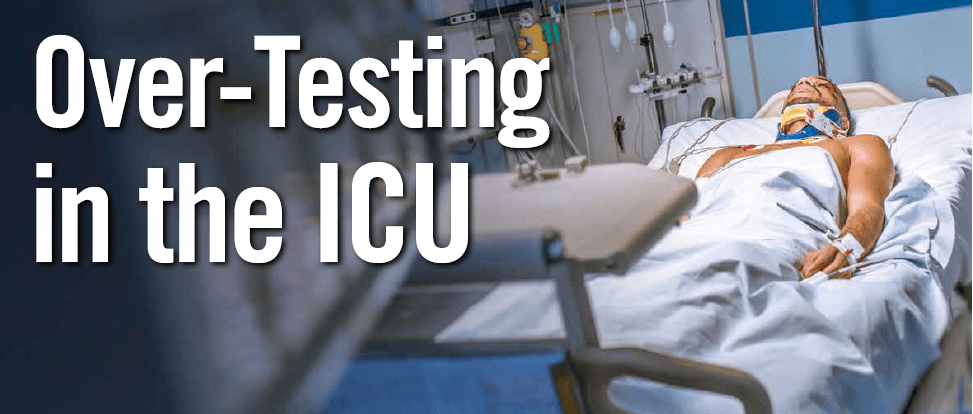With the burden of cost increasingly shifting from insurer to patient, healthcare debt is the leading cause of bankruptcy among Americans. It is time to look at what tests are actually needed for patients, says Brian K. Yorkgitis, DO.
The United States spends close to $3.5 trillion on healthcare each year, with an estimated $200 billion spent on excessive treatment and testing. Intensive care units (ICUs) constitute about 28% of charges for acute hospital care and more than 1% of the gross domestic product, making them an ideal starting point for reducing excessive healthcare costs.
With the burden of cost increasingly shifting from insurer to patient, healthcare debt is the leading cause of bankruptcy among Americans. Over testing doesn’t just harm an ICU patient’s financial health when the hospital bill arrives, it also can negatively impact his or her physical health.
Excessive phlebotomy can lead to anemia, which in a critically ill patient may lead to blood transfusion. A test that yields uncertain results or a false positive could lead to more and more testing, increasing the risk of harm with each additional procedure. Ironically, aggressive care is thought to cost 30,000 patients their lives each year.
Given the critical state of many ICU patients, physicians are driven to intensively order tests that may not alter a patient’s course. Often, patients are routinely checked and rechecked with blood work and other studies regardless of whether or not they show signs of clinical change or decompensation. But it’s important to distinguish that this is a culture of care; it does not follow the true standard of care.
Checking the Checklist
For a study published in the Journal of the American Osteopathic Association, my colleagues and I tested an intervention aimed to help ICU physicians think twice before ordering chest x-rays and blood work. While other studies have evaluated comprehensive measures to curb over testing, our work isolated a single component: the checklist.
The goal of the checklist was to remind physicians of the evidenced-based clinical practice before administering a battery of tests, per their routine or hospital’s culture of care. While making rounds on patients, clinicians were asked some basic evidence-based questions:
- Is a chest x-ray needed for clinical management tomorrow?
- What laboratory tests are medically necessary for tomorrow?
Unfortunately—though, perhaps, not surprisingly—it didn’t work. Our data showed no decrease in ordered chest x-rays or blood tests (Table).
Craving for Certainty
Many have postulated on the causes of overused healthcare, but the uncertainty theory often rises to the top. As humans, we crave certainty—especially in dangerous situations, when people become fearful. Patients fear for their lives. Physicians share that concern but with an added burden of responsibility. They fear being asked—possibly in court—whether they did enough or were vigilant enough.
However, good decisions are rarely based on fear. Instead, it’s important to rely on evidence, knowledge, and shared decision making with a trusted team.
To this end, the Choosing Wisely campaign emerged in 2012 with a message that more medicine is not always better. They created specialty-specific lists of “Things Providers and Patient Should Question.” The campaign was started as a partnership between Consumer Reports and the American Board of Internal Medicine.The Choosing Wisely movement believes all medical care should be:
- Supported by evidence
- Not duplicative of other tests or procedures already received
- Free from harm
- Truly necessary
Several critical care societies have collaborated to produce their own Choosing Wisely recommendations. The areas addressed include diagnostic test ordering intervals, blood transfusion, use of IV nutrition, sedation while on a ventilator, and addressing comfort-focused care for patients who have significant risk of death and impaired recovery. The checklist for our study was, in part, derived from this campaign.All of these recommendations and resources are only as good as the physicians who incorporate them into their practice. Each clinician and patient must develop a partnership and decide the best course of care together, based on available evidence. We must hold each other accountable to accept some uncertainty and not give in to fear, which can lead to harm.



 PWeekly
PWeekly